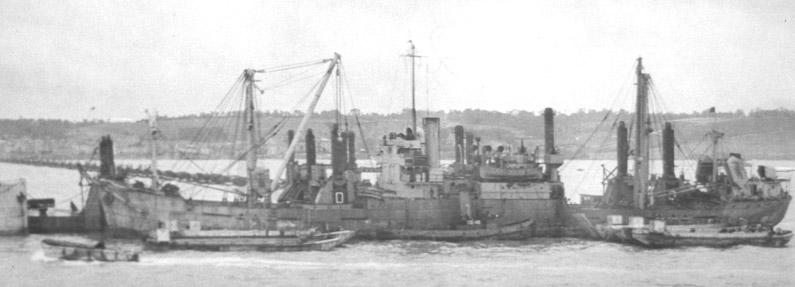|
The
tugs were numbered 1 to 12 and 14 to 183. TID tug orders summarised:
50 coal burners (10 changed to oil)
132 oil burners (for tropical service)
Tug Invasion Duties
TID tugs were used in the D-Day landings at Normandy, France, for
the invasion of Europe in 1944. They towed the floating roadways
which linked the Mulberry Harbour to the beaches and were kept very
busy servicing ships anchored in deep water. Some tugs were allocated
to the US Army. For a personal history of commanding a TID during
the invasion period, please click here.
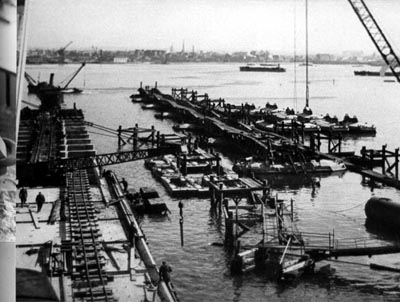
Port activity at Aromanche -
find the TID! |
 An
overview of the Mulberry Harbour
An
overview of the Mulberry Harbour |
Many were allocated to naval work and a number of them were shipped
to Eastern waters as deck cargo aboard heavy-lift vessels. Such voyages
can be exemplified by the departure from Liverpool on 22 May 1945
of the Empire Byng, with TIDS Nos 125, 126, 131, 132 and 133 as deck
cargo. She arrived at Bombay on 19 June.
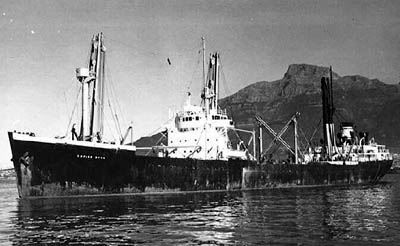
Empire
Byng
Similarly,
TIDS Nos. 122, 123, 124, 129 and 130 were shipped to the Pacific and,
in June 1945, joined the British Pacific Fleet at Manus, in the Admiralty
Islands. The islands had been established as a forward base in the
previous January, enabling the Royal Navy and its associated Fleet
Train of supply vessels to operate successfully thousands of miles
north of its main bases in Australia. A total of more than 800 ships
- naval and merchant - were assigned to these operations, but the
sudden end to hostilities in August 1945 caused many of the vessels
to be diverted or dispersed.
|
Peace
Time Duties
Although
owned initially by the Ministry of War Transport, the affairs
of TID tugs were managed by Stanley Tottle of Hull. Several
were given to established towage companies such as F.T Everard
of Greenhithe, some went to army units, both British and American;
many went into a Navy Pool in Portsmouth Harbour, while others
were sent to the Far East to support the British Pacific Fleet
and ultimately to help re-establish our bases at Singapore
and Hong Kong.
By October 1945 a number of the TIDs had reached Hong Kong
aboard the Empire Charmian, whilst others (TIDs Nos. 127,
128, 144-149 and 151) were despatched there from the U.K.,
as under-deck cargo on the Empire Marshal, on her maiden voyage
in November 1945.
Earlier,
in July, a further batch of TID tugs, still in the U.K., were
to have been refitted and tropicalised for Eastern service,
although in the event these plans were not carried out.
Click
here to read article 'TID class tugs at Portsmouth in
the 1960s', by Dave Russell.
|
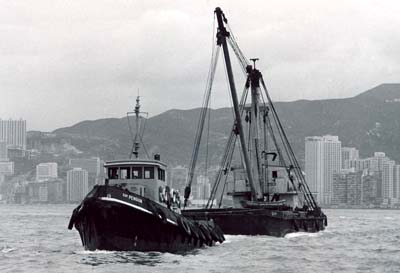
TID
151 in Hong Kong
|
|
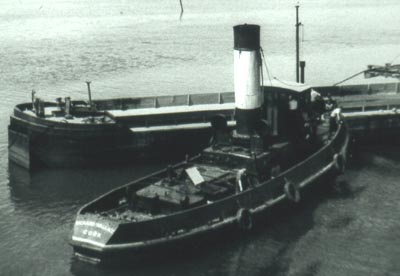
TID
108 working in Cork Harbour
|
Foreign
Service
When
the war ended some of the TID tugs engaged on naval work were
given a permanent transfer to the Admiralty, for continued
service at navy bases throughout the world. Most of those
which had served with the Army reverted to Ministry of Transport
jurisdiction before post-war disposal, with a number allocated
to various dock and harbour authorities and others to towage
and literage companies. In addition, a considerable number
were sold to continental buyers in France, Belgium Holland,
Finland, Norway and Sweden - and even one as far away as Uraguay.
However, it has not proved possible to trace the entire subsequent
history of a number of them.
The fourteen TID tugs sold to Finland made the passage in
three 'convoys', eight of them (see TID 1) sailing in October
1945, three (see TID 69) sailing from Great Yarmouth on 25
April 1947 and three (see TID 19) sailing from Dover two days
later.
A batch of eleven went to the French Government in December
1945, then passed to the civilian administrators of various
Channel ports. In 1948 one of them (TID 20), was shipped to
French Indo-China and three years later five more followed,
still retaining their TID prefix but renumbered TIDs I to
V and by 1947-1948 another ten or so had also passed into
French ownership.
|
|
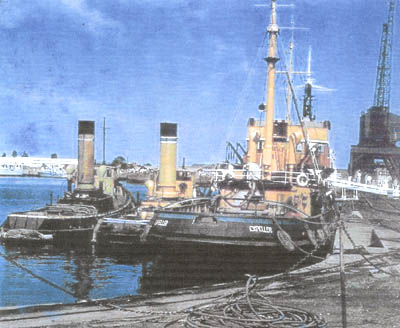
TIDs
61 and 83 attend a Navy Day, Chatham Dockyard, 1955
What
does T.I.D. stand for?
The origin of the letters "TID" remains unresolved.
When purchasing TID 164, Martin Stevens was given access to the Ministry
of Defence records at Bath, Somerset, relating to TIDs. He came across
several 'official' versions to explain the letters T.I.D.
and many others since:-
Towing Invasion Duties
Tug Invasion Duty
Tug Inshore Defence
Tug Inshore Duties
Tug Inshore and Dock
Tug In Dock
Tug Intermediate Design
Tug Inland Distribution
Temporary Invasion Design
- or just nicknamed "Tiddler" in the shipyard.
T.Y.P .... Take Your Pick !
|
TID
Crews
Some
examples of how TID's were crewed are as follows: TID 52,
a coal burning tug based at Chatham for internal Dockyard
duties, was crewed by one Mate in charge, one Stoker, two
Riggers and one Skilled labourer. Crew were drawn from the
Port Auxiliary Service (PAS) pool as required.
TID 57, a coal burning tug based at Rosyth Dockyard was crewed
by one Mate in charge, one Mechanician, two Stokers, one Able
seaman and one Ordinary Seaman.
TID
164, an oil fuelled tug based at HMS Lochinvar, a Royal Navy
Minesweeping and Minelaying Base on the Firth of Forth, was
crewed by one Bosun in charge, one Chief Stoker, one Stoker,
and two Seamen.
While
in Ministry service, it should be noted that the vessels were
not significant enough to justify a Skipper or Engineer.
|
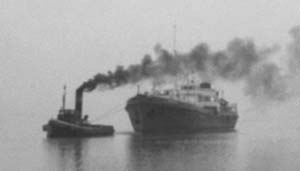
|
|
|
